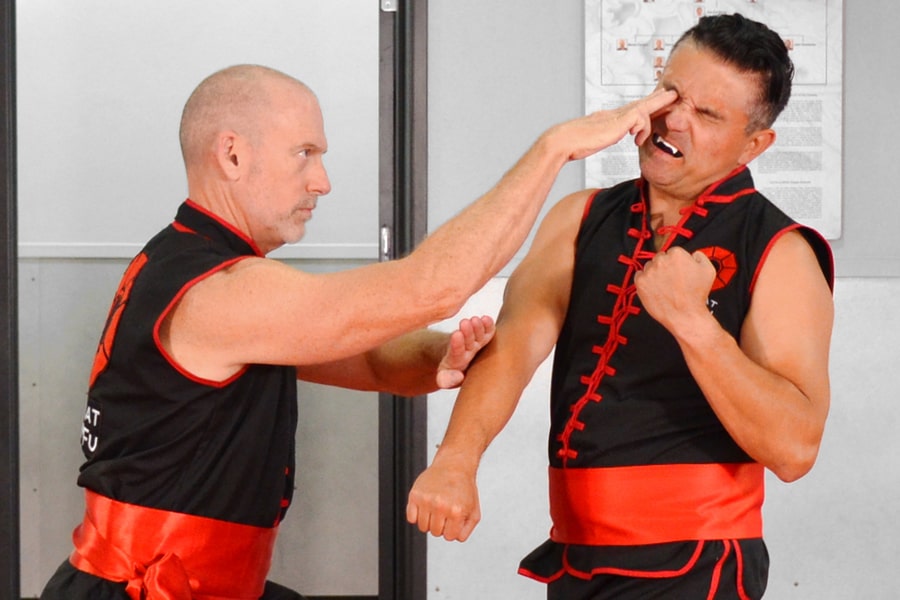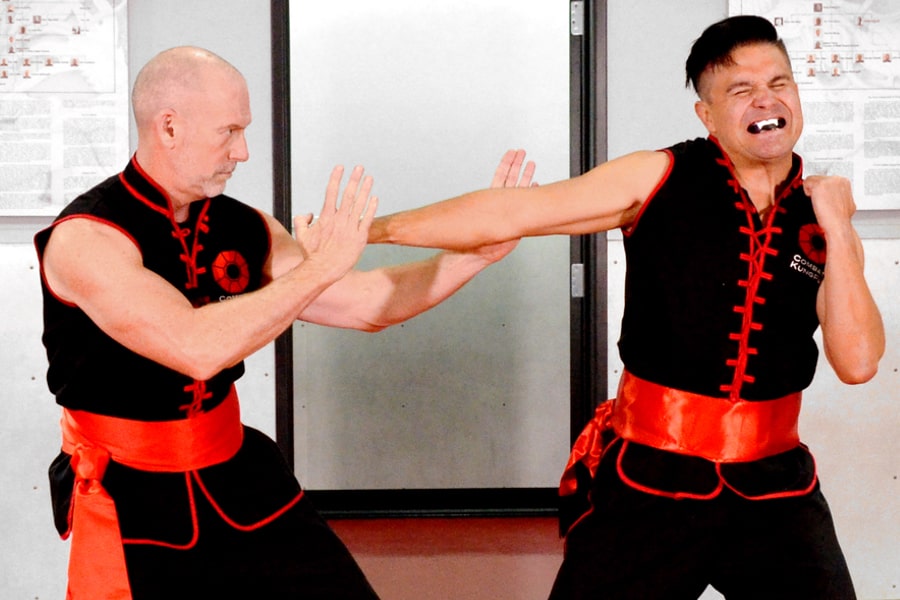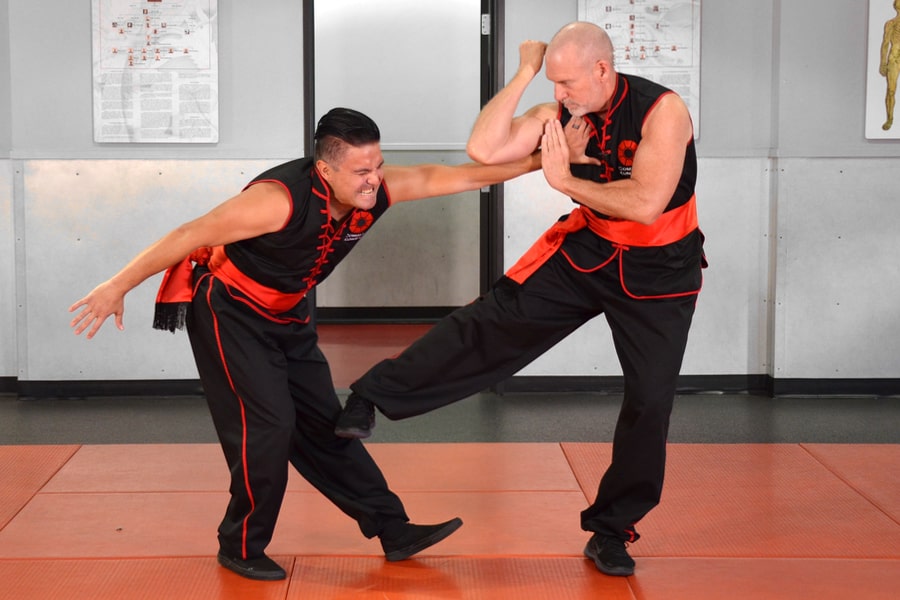
First of all, what are self-defense techniques and why should one study them? Even though self-defense techniques are just one facet of martial arts training, they are especially useful tools because they focus the student directly on the kinds of fighting scenarios that one might face out on the street, or in one’s daily environment. Self-defense techniques are essentially specific responses to attacks like a right punch, club attack, or multiple person assault. The idea is to learn how to respond in most kinds of likely attack situations and practice these responses solo and with a partner, so that they become second nature to you. That way if you’re ever confronted by an actual assailant you’ll know exactly what to do to stop your attacker.
Additionally, practicing self-defense techniques is a great way to refine and strengthen the basic components needed to actually defend yourself. These components are things like blocks, hand strikes, knee and elbow strikes, kicks, leg sweeps, joint locks, break falls, and other specific moves you’ll need for self-defense. And, by practicing techniques solo (without a training partner) you can improve your precision and form, while at the same time move at speeds that could be potentially dangerous to a workout partner. Solo practice can also help you learn how to flow smoothly and quickly from one strike to the next, improving the speed and explosiveness of each step of your self-defense technique.

Studying self-defense techniques also help you learn how to access all of the body’s vital targets, and which strikes and kicks are best for maximizing damage to the attacker. It is in techniques training where you learn that attacking body targets like the eyes, or solar plexus, require using smaller more pointed strikes like fingertips, or the single knuckle of a phoenix eye fist for maximum effect. Similarly, one learns that a properly timed palm strike is ideal for hyperextending the elbow of a punching arm, or that a low side kick is often the best way to dislocate the knee of an armed attacker slashing at you with a knife.
However, realize that just memorizing a bunch of techniques will not guarantee you the ability to defend yourself. You will still have to develop the ability to adapt to the changing circumstances of an attack. To develop this kind of skill, you’ll have to engage in live training with a skilled partner wearing all of the proper protective equipment. This type of training is the ultimate way to cement self-defense knowledge into your brain, because your mind needs tactile experience to completely absorb self-defense information into long term memory. Practicing techniques with a partner will also help you develop the timing and reflexes that are essential to developing true fighting skill.

Additionally, practicing with a partner will help you learn how to use the energy of your opponent’s attack to your benefit. At Combat Kung-Fu, we always train students to avoid fighting force with force. Therefore, always try to use the force of your assailant’s attack to power your self-defense response. For example, if your attacker pushes you backwards, you should go with the force of the push by stepping back away from the assailant. Then, as your back leg plants into a more stable stance, you can easily lift your front leg up to deliver a powerful front kick to the attacker’s groin. By using this principle, you can actually harness the energy of the opponent’s attack to make your self-defense response even more powerful and effective.
At Combat Kung-Fu it is our hope that through the regular study of self-defense techniques you’ll become fluent in the vocabulary of self-defense, such that even if confronted with a situation you’ve never thought of, you’ll be able to adapt to your circumstances and react quickly and decisively enough to stop whatever attack you face. Happy training!